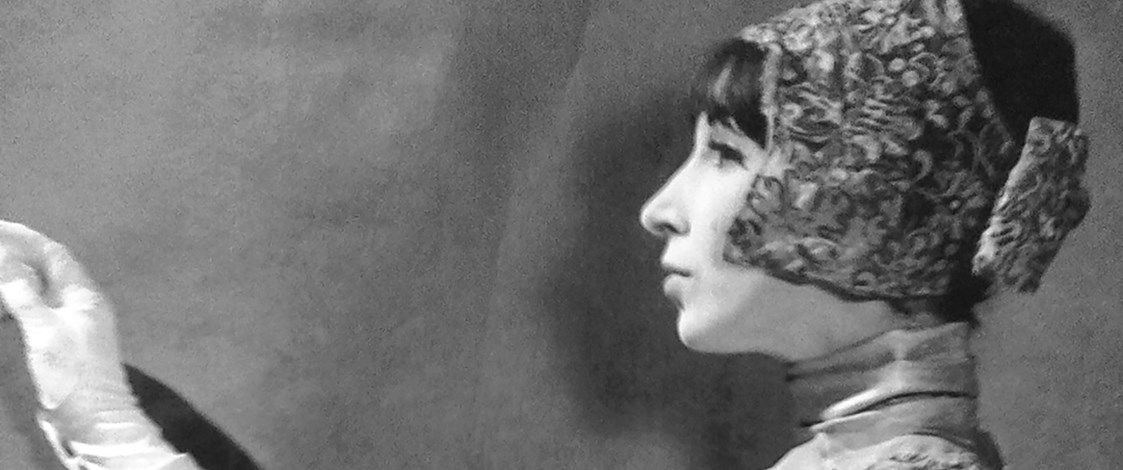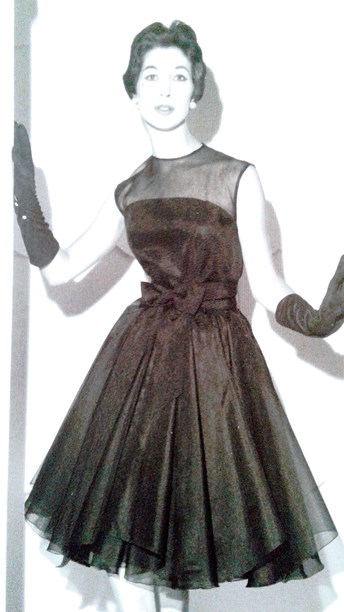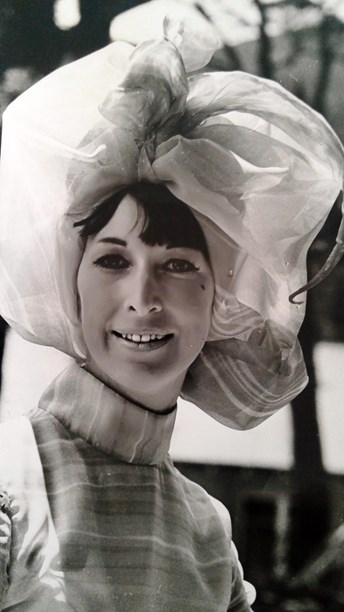Stories
Josephine Brodie

Hard work, good fortune and an unerring sense of style have sustained the unique 60-year career of Josephine Brodie.
Perhaps surprisingly, it was a nun at St Mary’s College in Wellington who suggested that the leggy 15-year-old, who peppered her exercise books with fashion drawings, consider a career in fashion. This was advanced thinking for the 1950s when most girls were expected to fill the expected brief hiatus between high school and marriage by becoming a teacher, nurse or shorthand typist.
Josephine was duly enrolled at the Delahunty Modelling School in Wellington where she was told she would make a 'really great mannequin', as models were then called.
At 16, Josephine won a top model competition and went on to be a much-photographed fashion celebrity of the 1960s and 1970s both in New Zealand and across the Tasman.
This still glamorous doyen of fashion now contents herself with importing European designer clothing for a small number of high-flying women clients who trust her to make their key wardrobe decisions. For Josephine, the keynote of dressing well is simplicity. She knows what it feels like to 'inhabit' a Dior or Chanel garment and to her, cut, line, fabric and finish are the essentials of good design.
At 16, following her modelling win, she received a phone call from Gus Fisher of El Jay who also held the Christian Dior licence for New Zealand. She was to go to Auckland and model for his client showings.

Josephine Brodie modelling an El Jay cocktail dress, 1962.
She recalls long periods of standing draped in calico patterns or waiting for him to pick buttons for his El Jay collection before the buyers arrived. Gus became a lifelong mentor. "Gus was the most wonderful fun – a fabulous person and fanatical about detail. He had a perfect eye. When you modelled you would live that garment – you took on the personality of that garment."
In those early years Josephine modelled all over New Zealand at stores and other fashion events, many of which she organised herself. It was a travelling lifestyle – not much money because models had to supply their own accessories and makeup, but nonetheless exciting. She recalls seeing huge advertising photos of herself promoting a 'Sarongster' high-waisted girdle for Berlei. Heady stuff for a girl barely out of her school uniform.
She moved to Sydney at 18 and among assignments was modelling the famous "sack" dress when it was introduced to Australia (and later, back home in New Zealand).
The formidable designer and stylist Mona Crawford was the fashion buyer for Mark Foy’s department store where Josephine worked for a while. It was under Mona’s watchful eye that Josephine did a type of store buyer’s course and it was Mona who gave her a start as a fashion compere.
"One day she commanded: 'Josephine! Go to the Sports Department. There is a fashion parade starting in 30 minutes and you’re compering it'. There was no possible answer but 'Yes Miss Crawford'. That was the start of the compering and fashion promotion side of my life."
Josephine could have gone further afield as a model, but returned to Wellington when her mother became ill.

Josephine Brodie wearing a pastel chiffon hat made by her mother, milliner Zena Brodie, in the early 1960s.
For some years she worked exclusively for James Smiths department store as fashion promoter. One of the highlights of that period was organising an extravagant parade for the store’s centenary celebrations in 1966. "The idea was about going into the future, rather than looking back. I was 'Time' and the models all emerged out of a huge clock. Then we took off into the galaxy and arrived on the moon! Opening night was a fabulous occasion with everybody dressed so beautifully," she recalls with a hint of nostalgia. She still loves to dress up.
Another mentor was menswear manufacturer and importer, Austin Levy. For a fashion extravaganza for The New Zealand Manufacturers Association she decided to include menswear – a first in New Zealand. With Austin’s help they put coloured suits and coloured shirts together – another innovation at that time. She also set about recruiting male models. At a friend’s wedding a handsome young Rhodesian student caught her eye. Ever direct, she asked if he would like to model for her and thereby launched the modelling career of Johnny Chico.
She recalls this as a hectic period, in one week compering 20 parades a day for different promotions. "I’ve done fashion shows on planes, in cars, on boats you name it. It made life very, very exciting."
In 1964 she began her 15-year involvement in New Zealand’s longest running fashion event. There’s no question that her part in creating, co-ordinating and compering what would become the Benson & Hedges Fashion Design Awards, is a major career highlight.
"I saw it as an opportunity to encourage and develop New Zealand fashion designers in all sorts of areas," she said in an interview with Sian Robyns 30 years later. "I started the Woolgrowers’ Award to see what the spinners and weavers were doing. I introduced a Fantasy Award to add a bit of fun. We pushed suede and leather. And we met all sorts of interesting people." (The Dominion, 4 April, 1994).
The first event leading up to the creation of the Benson & Hedges was organised by Jeannie Gandar, then president of the NZ Modelling Association, and sponsored by cigarette manufacturer WD & HO Wills. Josephine modelled the Gown of the Year, a cyclamen-coloured dress and coat by William McElvoy. He was also the runner-up with a dress in gold leather and heavy guipure lace, jacket topped with a cocktail hat made by Josephine’s milliner mother, Zena.

Josephine in a cyclamen pure wool gown by designer William McEvoy which won the Wills Gold Rose Awards for Design in 1964.
The following year’s awards were organised by Josephine as the new Modelling Association president. She was asked to make the event a national one, re-named the Benson & Hedges Fashion Design Awards. The celebrity judge list in those early years included Dame Zara Bate, fashion designer and widow of Australian Prime Minister Harold Holt, Australian fashion editor Ita Buttrose and Californian Rudi Gernreich.

Josephine Brodie with the Minister of Tourism Whetū Tirikātene-Sullivan, her husband Dr Denis J Sullivan and Ayline Drewitt at the 1973 Fashion Spectacular show.
Josephine persuaded television executives to broadcast the show. The television coverage of the 1978 Benson & Hedges Fashion Design Awards can be viewed online at NZ On Screen.
After the main Wellington city event, the show would travel. "In small towns at night all the farmers and their wives would come and the women would be beautifully dressed with all their jewels – the whole town would turn out," she remembers.
Two designers from the awards stand out in her mind. One was the late Peter Rigby, a London-trained tailor who won two Benson & Hedges awards in 1966. The other standout entrant was Susan Holmes whose painted fabric gowns appeared regularly at the Benson & Hedges Awards.
In 1980 Josephine moved back to Sydney, working for the Westfield chain as their national fashion co-ordinator for the next two years.
Then, heeding her younger son’s plea not to travel too much, she launched her own retail and wardrobe consulting business in Neutral Bay. 'Dress by Josephine' quickly became a 'go to' place for Sydney’s rich and famous women, though she is always discreet about naming her clientele. Her preference was, and still is, for European clothes and she buys to this day from German import agents she first met in Sydney. She was also among the first to import directly from New Zealand designers, mostly friends and colleagues such as El Jay, Miss Deb, Peppertree, and Love Story.
Though she would never call herself a designer, she did choose fabric, draw and style evening gowns from time to time for specific clients and have them made up by her alterations seamstress.
It was with some regret that she closed the Neutral Bay store in 1994 and returned to settle in Auckland, this time following her heart. For a couple of years after her return she was involved in a company promoting wool. "That was fun, but it wasn’t really me," she explains.
Then her German agents approached her and said 'Josephine what are we going to do with our excess stock?' Never short on energy or ideas, she decided to run Auckland’s first pop up shops at the Viaduct basin. "I ran them about half a dozen times and it was just fantastic. Then I thought 'I really enjoy this. I love dressing women' so I opened up the European Fashion Studio in Newmarket which I had for 10 years. It closed in 2010."
Looking back, Josephine has always loved clothes. "As a little girl we had a family hotel here in Auckland and I gather that when my mother had luncheons for her friends, I used to come downstairs and show off my pretty dresses. My mother was a great encouragement too. She had wonderful taste and she was a brilliant milliner. For years I was the best-hatted lady in New Zealand!"
She considers herself most fortunate to have been able to do the things she loves throughout her working life. "I think having faith in yourself is one of the most important things. I also love what I do with a passion."
Text by Katherine Findlay. Banner image Josephine Brodie wearing a gold leather and guipure lace dress, 1964, © Josephine Brodie.
Last published December 2016.